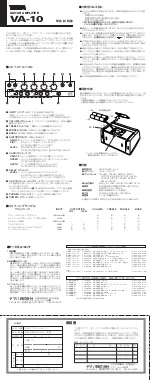
66
Glossary
Arrangement
This refers to changes that have been made in an original
tune, by adding a new accompaniment or by changing the
instruments used.
Automatic Accompaniment
Automatic Accompaniment is automatic accompaniment
when just a few keys in the lower section of the keyboard are
pressed to specify the chord.
Basic Chord
This refers to the most commonly used types of chord, which
are generally the following six types: major chords, minor
chords, minor seventh chords, minor seventh ( 5) chords,
dominant seventh chords, and diminished seventh chords.
Chord
Notes of two or more pitches sounded simultaneously.
Chords consisting of three notes are called “triads,” and are
the most basic type of chord.
Ending
This is the last part of the accompaniment. When you stop
playing the Automatic Accompaniment, the AT-10S plays an
Ending appropriate for the Rhythm.
Glide
An effect that temporarily lowers the pitch and then
gradually returns it to normal.
Intro
This is the introductory portion of an Automatic Accompa-
niment performance. The AT-10S plays an intro ideally
suited to each Rhythm when it starts playing the Automatic
Accompaniment.
Panel Settings
Settings such as sound selections, tempo, Rotary fast/slow.
Reverb
An effect that simulates the reverberation of a room or
concert hall.
Root Note
The root note is the basis of a chord. All chords are built on a
root note, which is the part of the chord name given in
uppercase letters.
Rotary
An effect which simulates the modulation given to the sound
when a rotating speaker is used. The Rotary effect produces
two types of modulation: fast or slow.
Voice
The AT-10S is able to produce the sounds of various instru-
ments. These sounds are called “Voices.”
Summary of Contents for Music Atelier AT-10S
Page 76: ......











































